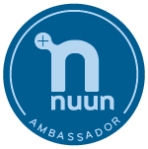I have tried several different types of “minimalist shoes” and the conclusion I have come to is that the minimalist shoe is simply not for me. They typically feel great and are very comfortable, but I feel that I need more support and cushioning than they provide. What I like most about them is the zero-drop that most of them have – meaning that the heel and toes are the same distance off the ground. Most traditional running shoes have a 12mm drop, so that the heel sits significantly higher off the ground than the toes. This is what forces most people to strike the ground with their heels first.
So I’ve been sticking with my traditional running shoes (Brooks Ghosts) and practicing good form for quite a while now. The biggest thing I’ve had to work on is getting the mid-foot strike down as opposed to the heel strike. Since traditional running shoes make this hard, it’s always been a struggle to tell exactly how my foot is landing on the ground.
A few weeks ago I heard an interview with the founder of Altra running shoes on the Another Mother Runner podcast and the way he explained Altra shoes and how they came to be made me knew I had to try them. The premise is simple: They have the cushioning and support of a traditional running shoe, but they have a zero drop, so the heel and toes are the same distance off the ground. It’s the perfect solution for me because it combines my need for cushioning and support that is lacking in a minimalist shoe, but it has the zero drop that I like from the minimalist shoe. I quickly ordered a pair of the Altra Intuition 1.5s online (very unlike me – I always like to try them on in person before making a purchase, but I had a good feeling about them, so I went for it).
I’ve run in my Altra’s three times now (5 miles, 6 miles, and 6 miles) and am blown away! They are super comfortable, they hug my feet just right, and they force me to strike the ground with my mid-foot. It’s amazing what happens when you take away the higher heel – suddenly good form comes naturally and I don’t feel like I have to work at it with every step. The box warned that one should ease into the shoes, similar to the minimalist shoes (though perhaps at a little faster rate) because most people aren’t used to the zero drop. However, after my first run of 5 miles, I had zero Achilles or calf soreness, so I wore them again 2 days later for a 6 mile run. Again, no soreness or weird aches and pains, so I’m going to keep on wearing them full-time. I am so excited that Altra came up with the solution I’ve been looking for and that I found these shoes. I’m normally very wary to try new shoes (I am very particular and finicky about my running shoes), but this is one plunge I am so thankful I took!









